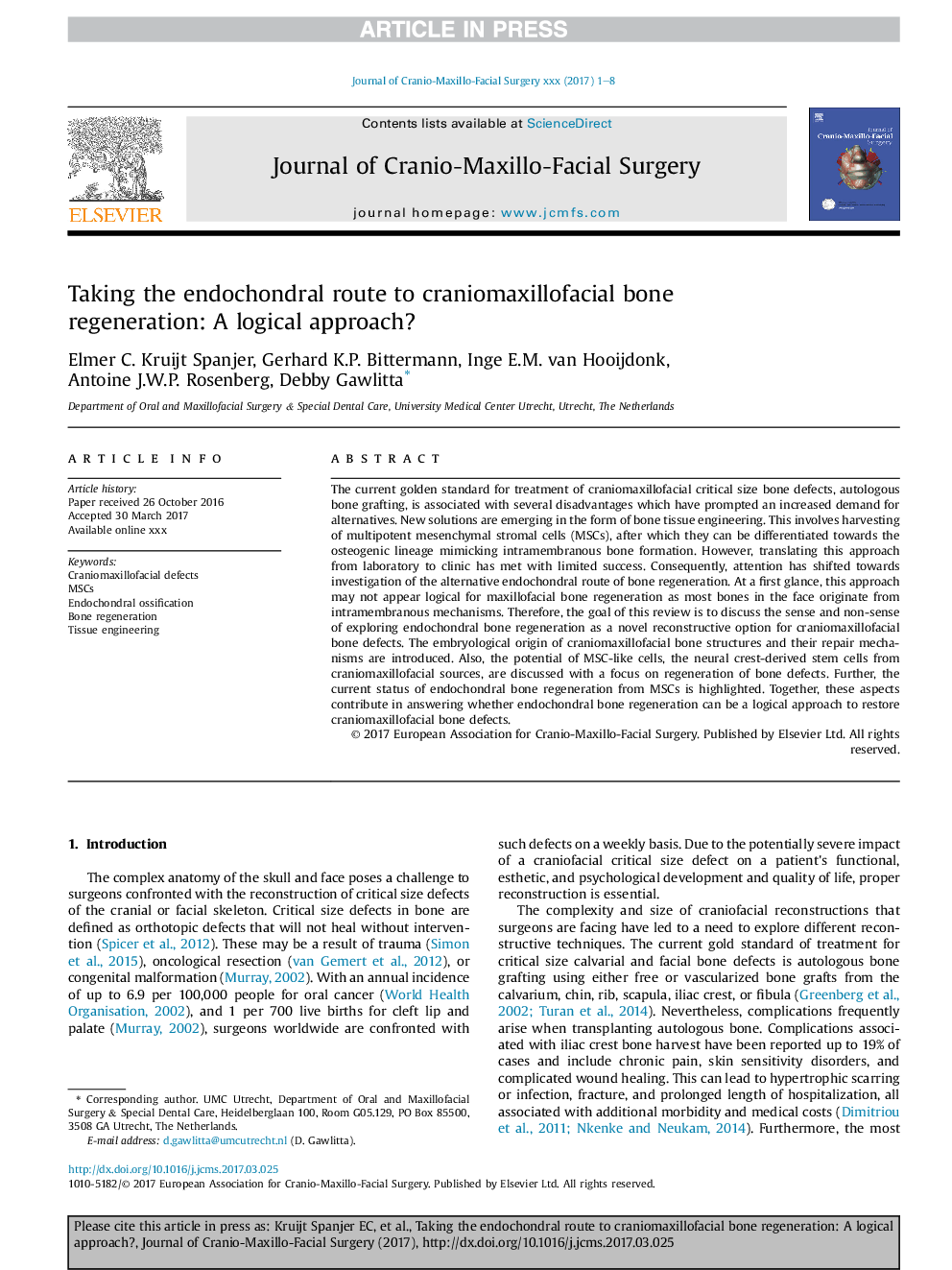| Article ID | Journal | Published Year | Pages | File Type |
|---|---|---|---|---|
| 5640136 | Journal of Cranio-Maxillofacial Surgery | 2017 | 8 Pages |
Abstract
The current golden standard for treatment of craniomaxillofacial critical size bone defects, autologous bone grafting, is associated with several disadvantages which have prompted an increased demand for alternatives. New solutions are emerging in the form of bone tissue engineering. This involves harvesting of multipotent mesenchymal stromal cells (MSCs), after which they can be differentiated towards the osteogenic lineage mimicking intramembranous bone formation. However, translating this approach from laboratory to clinic has met with limited success. Consequently, attention has shifted towards investigation of the alternative endochondral route of bone regeneration. At a first glance, this approach may not appear logical for maxillofacial bone regeneration as most bones in the face originate from intramembranous mechanisms. Therefore, the goal of this review is to discuss the sense and non-sense of exploring endochondral bone regeneration as a novel reconstructive option for craniomaxillofacial bone defects. The embryological origin of craniomaxillofacial bone structures and their repair mechanisms are introduced. Also, the potential of MSC-like cells, the neural crest-derived stem cells from craniomaxillofacial sources, are discussed with a focus on regeneration of bone defects. Further, the current status of endochondral bone regeneration from MSCs is highlighted. Together, these aspects contribute in answering whether endochondral bone regeneration can be a logical approach to restore craniomaxillofacial bone defects.
Related Topics
Health Sciences
Medicine and Dentistry
Dentistry, Oral Surgery and Medicine
Authors
Elmer C. Kruijt Spanjer, Gerhard K.P. Bittermann, Inge E.M. van Hooijdonk, Antoine J.W.P. Rosenberg, Debby Gawlitta,
